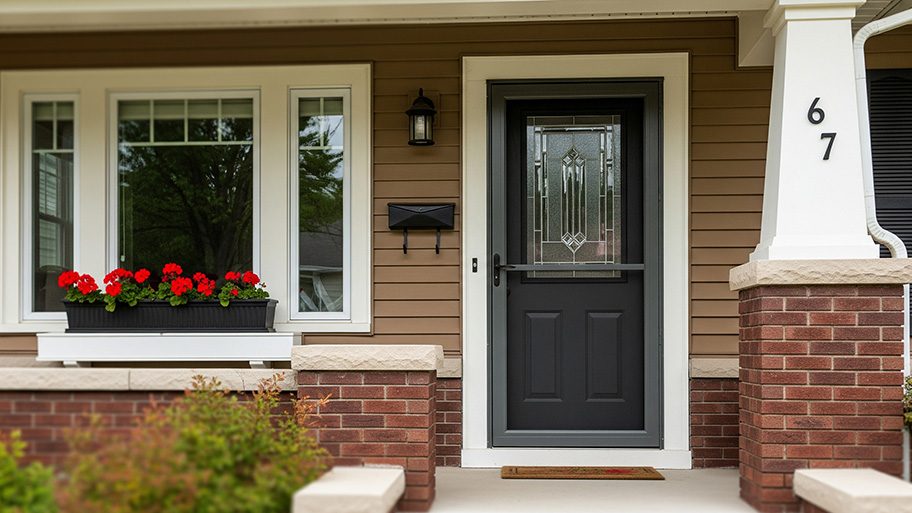
A storm door can protect your front door and let in more fresh air. Find out how much storm door installation costs for materials, labor, and more.
Slide into the best new door for your home in style


A local door installer will help you match the right door style to your layout, traffic patterns, and available clearance.
Accordion and bypass doors tend to be the most budget-friendly, while telescopic and multi-panel glass are more luxury-priced.
Installation difficulty varies depending on the type of doors you choose—pocket and telescopic doors need structural adjustments and complex tracks, whereas shoji and accordion doors are more straightforward.
Bypass and sliding glass doors are the most common choices because they work in small rooms, closets, patios, and modern interiors.
Accordion doors are perfect for large openings, pocket doors disappear into the wall, shoji doors filter light softly, and telescopic doors maximize views.
Sliding doors have a way of conserving space in your home better than traditional doors. There are several types of sliding doors available for ramping up one’s style, and each one comes with its own pros and cons worth considering before you slide into a decision.
Whether you’re installing sliding doors for your patio, ensuite bathroom, or as a room divider, we’ve rounded up seven of the most common types of sliding doors to consider before you call in a door installation pro.
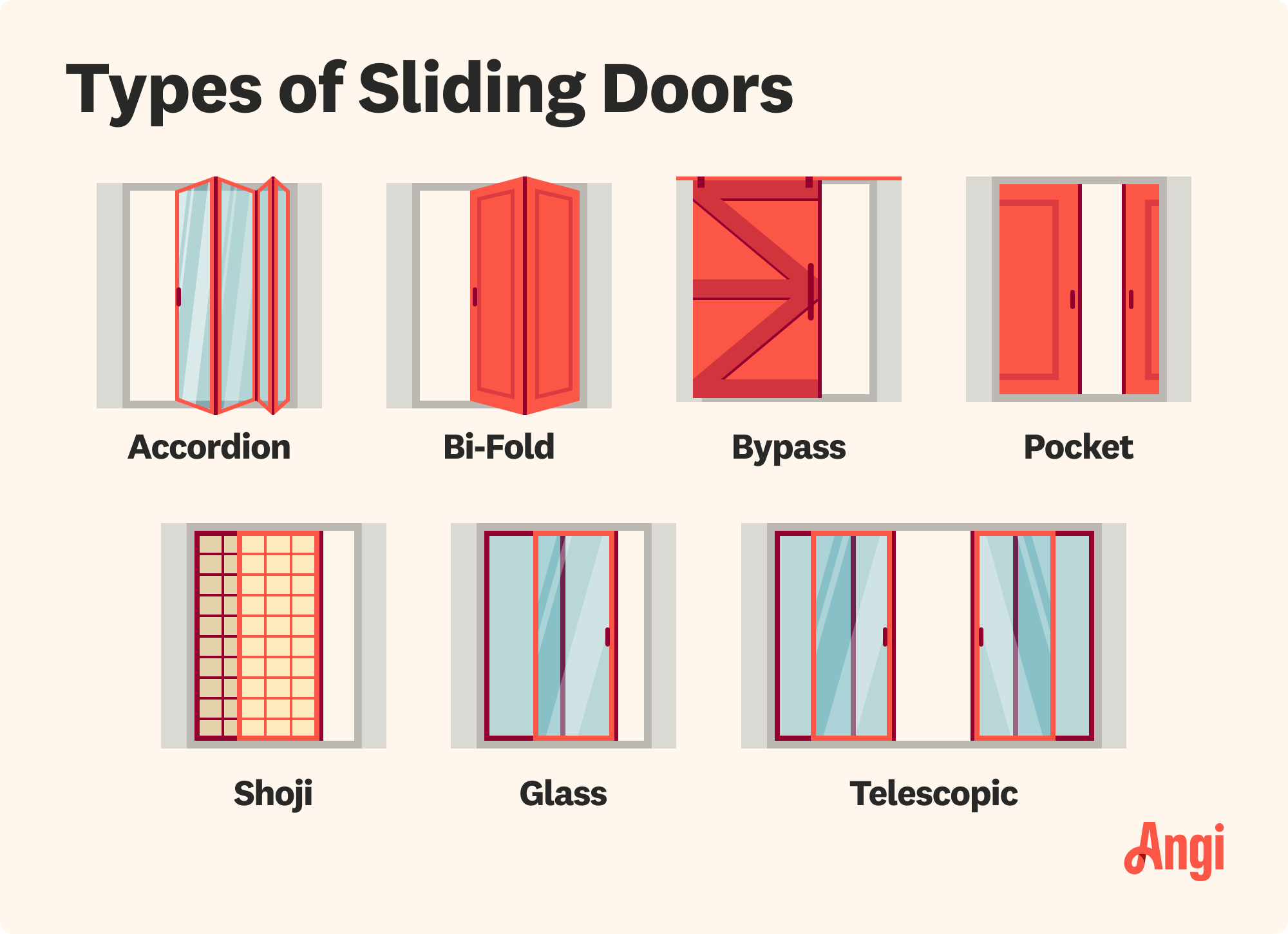
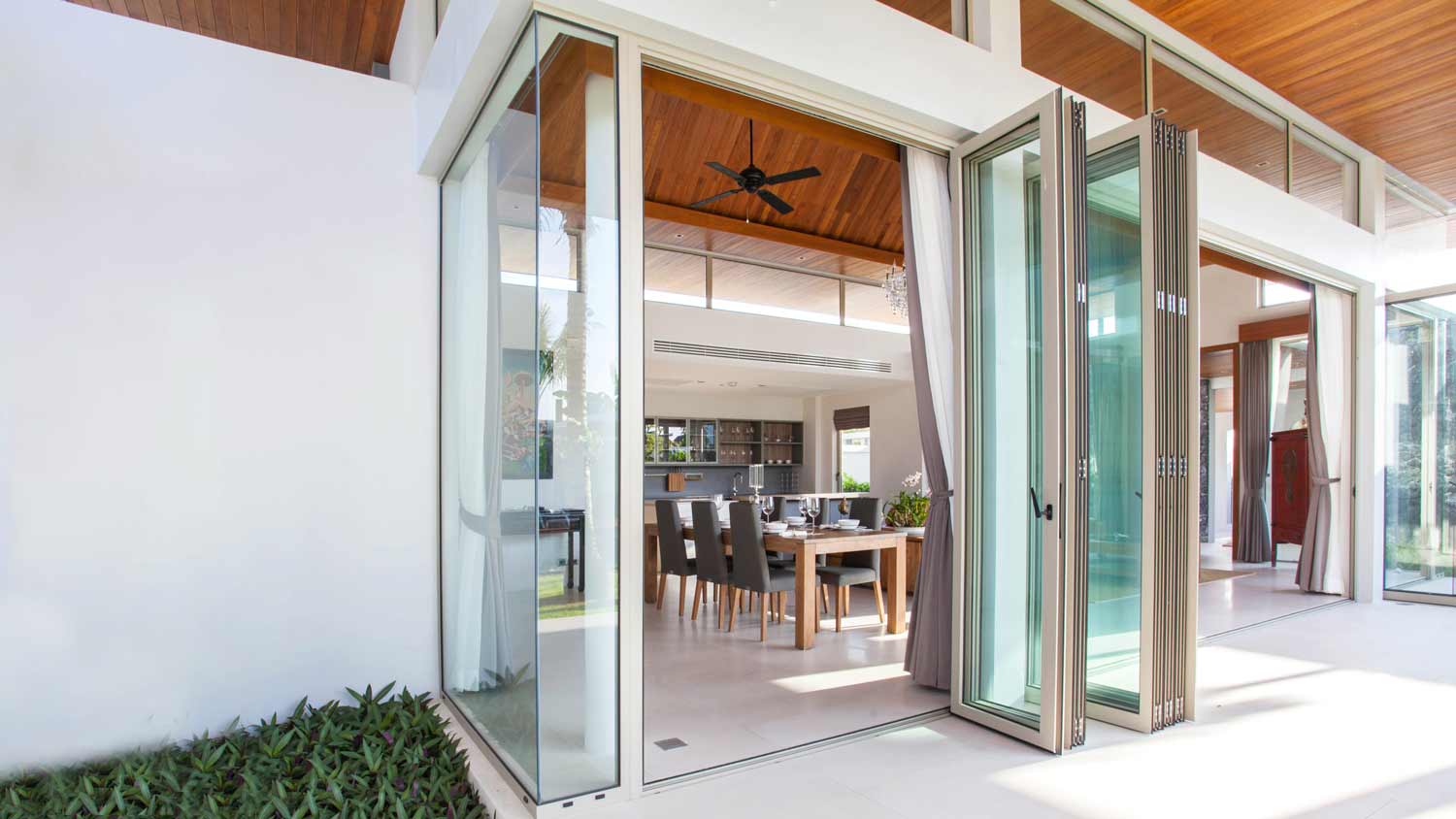
Much like an actual accordion, accordion sliding doors fold together to save space. This type of sliding door is commonly used in spaces that need large rooms closed off, as accordion doors can close off an entire room at an affordable cost. Since accordion doors typically contain vinyl, they’re lightweight and easy to install.
| Pros | Cons |
|---|---|
| Lower cost | Less durable |
| Easy to customize and install | May not offer aesthetics |
| Compact and space-saving | Only offers partial soundproofing |
Best for: Flexible spaces that don’t have a lot of room
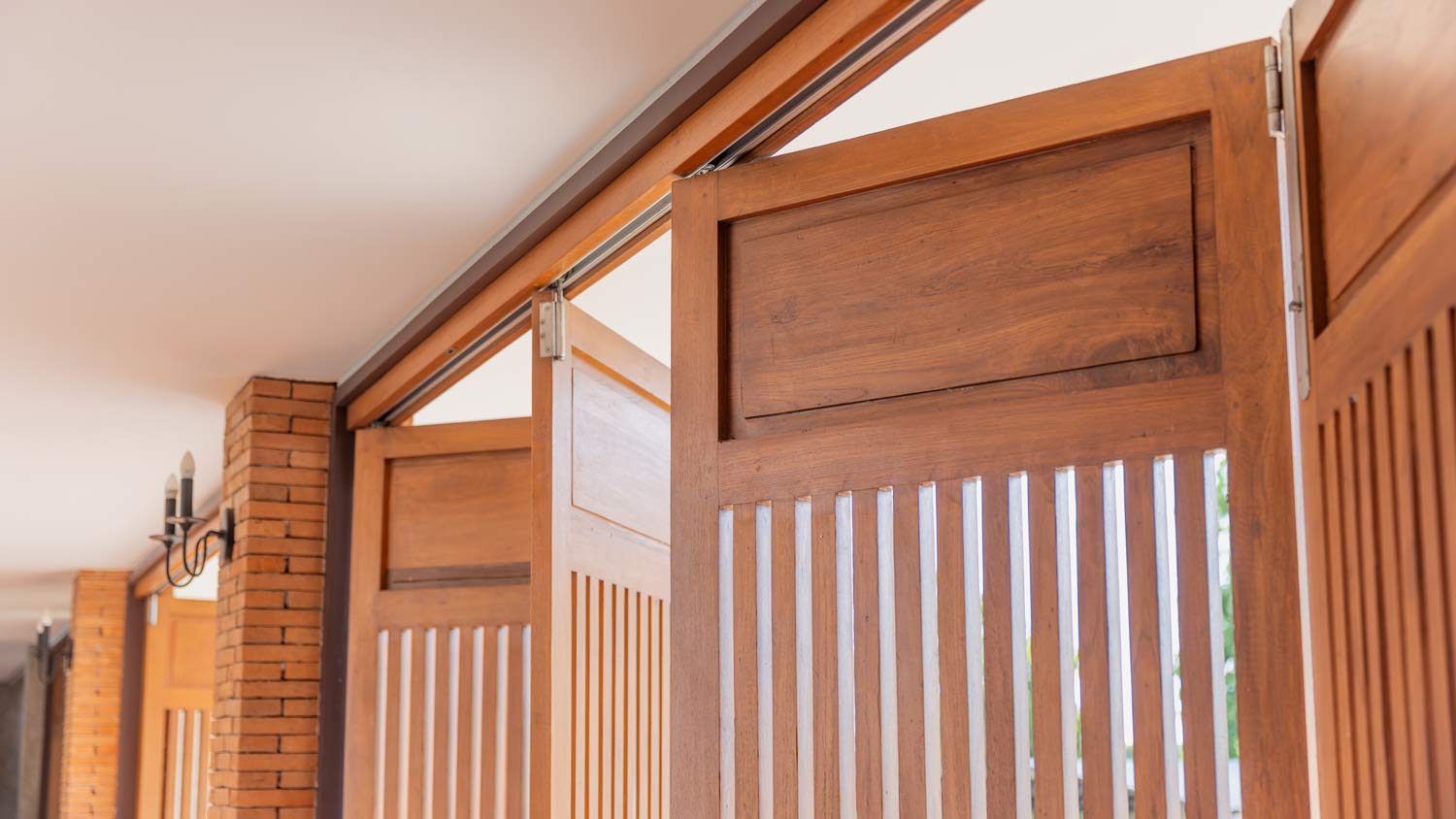
Bi-fold doors operate similarly to accordion doors, folding in on themselves to open up wide to small spaces. However, these sliding doors are made of solid materials like glass or wood and take up more space as they fold. Still, their solid, stylish materials make them a great option for enhancing accessibility to larger openings, like a folding patio door.
| Pros | Cons |
|---|---|
| Comes in a variety of styles and sizes | Requires more space |
| Accessibility-friendly, wide openings | Track maintenance |
| Flexible installation sites | May have a higher cost |
Best for: Those looking for a wide opening for wheelchair accessibility.
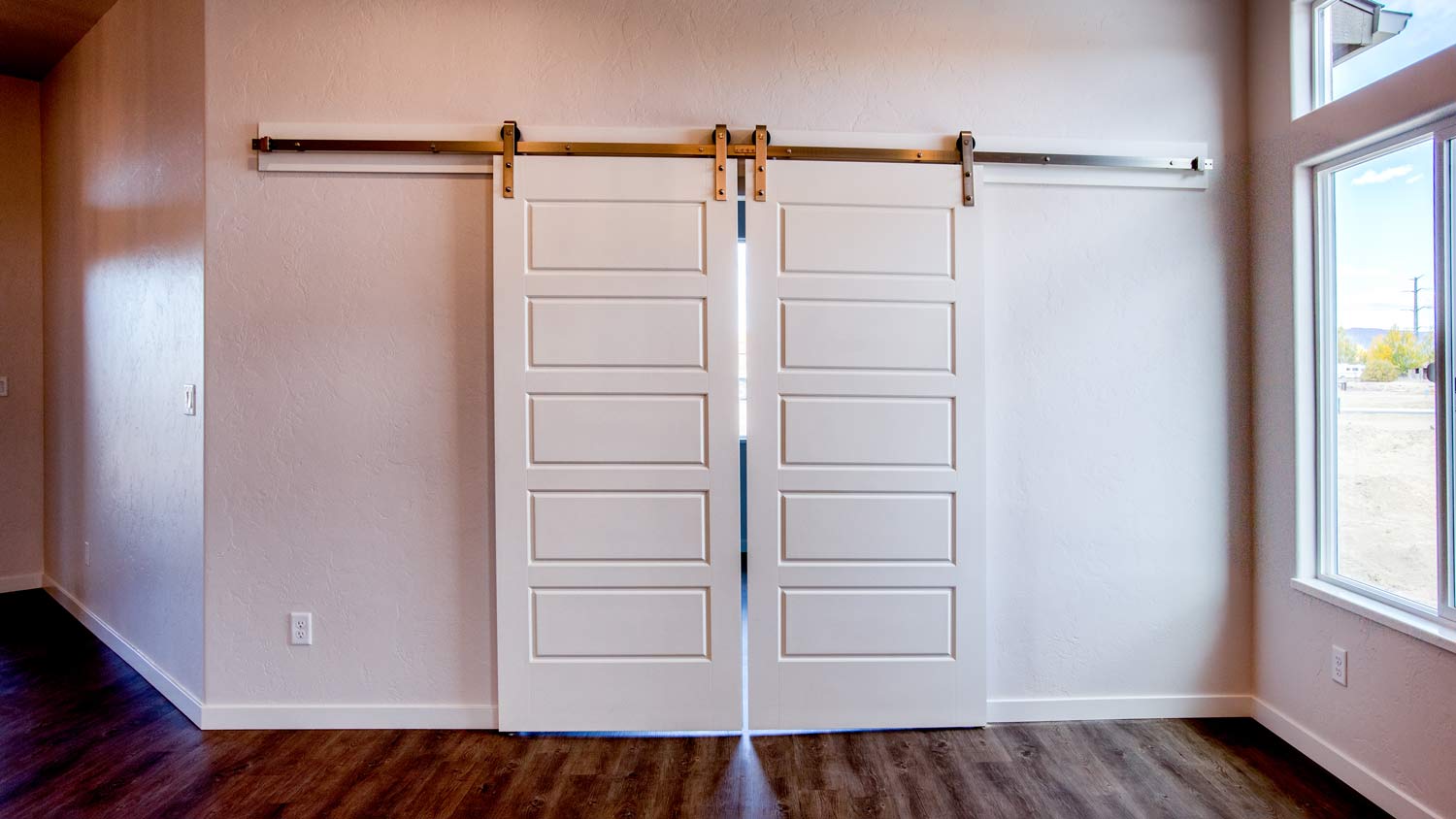
Bypass sliding doors move on running tracks, with one door sliding over the other to save space. This makes them practical for entrances with limited room for standard doors. Bypass sliding doors come in a variety of materials and styles. For example, if you’re after a rustic sliding door, it doesn’t get much better than barn doors. These sliding doors are a type of bypass door. Most barn doors are made of solid wood.
| Pros | Cons |
|---|---|
| Saves space | Limited accessibility |
| Smooth operation | Harder to install |
| Easy to customize | Requires track maintenance |
Best for: Small spaces like closets, pantries, laundry rooms, and bathrooms, or those looking for a rustic design

Now you see it; now you don't. With a pocket sliding door, you don't have to worry about your sliding doors being visible and taking up space. Pocket sliding doors slide into the wall, making them an excellent addition to homes that can’t fit a standard door or other sliding door style. This installation requires slight modifications to the door to fit into the wall.
| Pros | Cons |
|---|---|
| Space-saving | Requires wall modifications |
| No door visibility | Easily jams |
| Offers a streamlined look | Noisy operation |
Best for: Tight spaces with room inside the wall space to fit a door
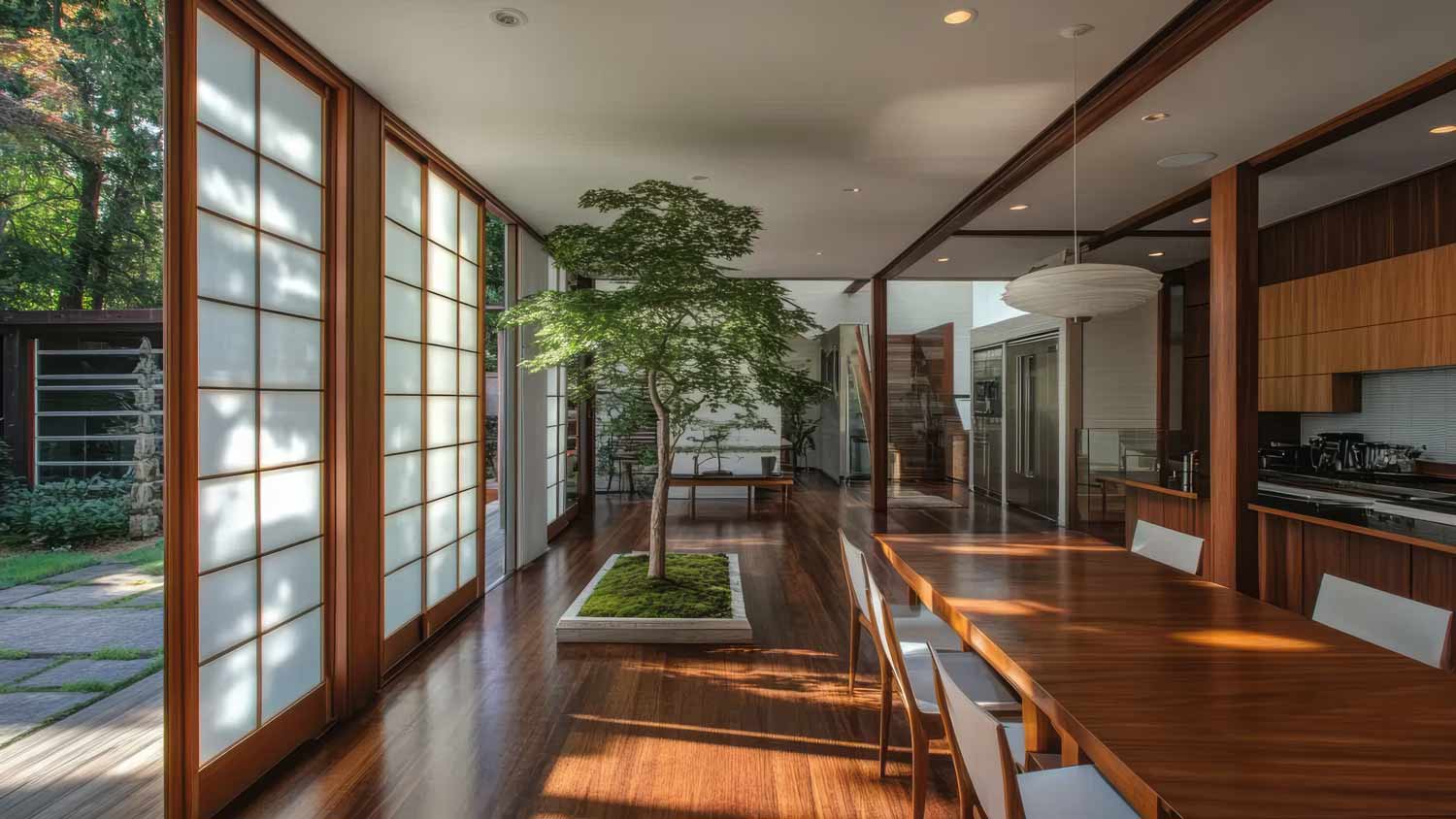
For sliding doors that embody your inner zen, Shoji doors offer a one-of-a-kind style to interior spaces. These Japanese doors typically come from wood and paper materials, making them lightweight, easy to install, and delicate. Shoji doors are most commonly used as room dividers, and their opaque design can let in partial lighting for a warm, inviting space.
| Pros | Cons |
|---|---|
| Unique style | Most fragile |
| Lightweight | Not suitable for high traffic |
| Easy to install | Less readily available |
Best for: Low-traffic areas as space dividers
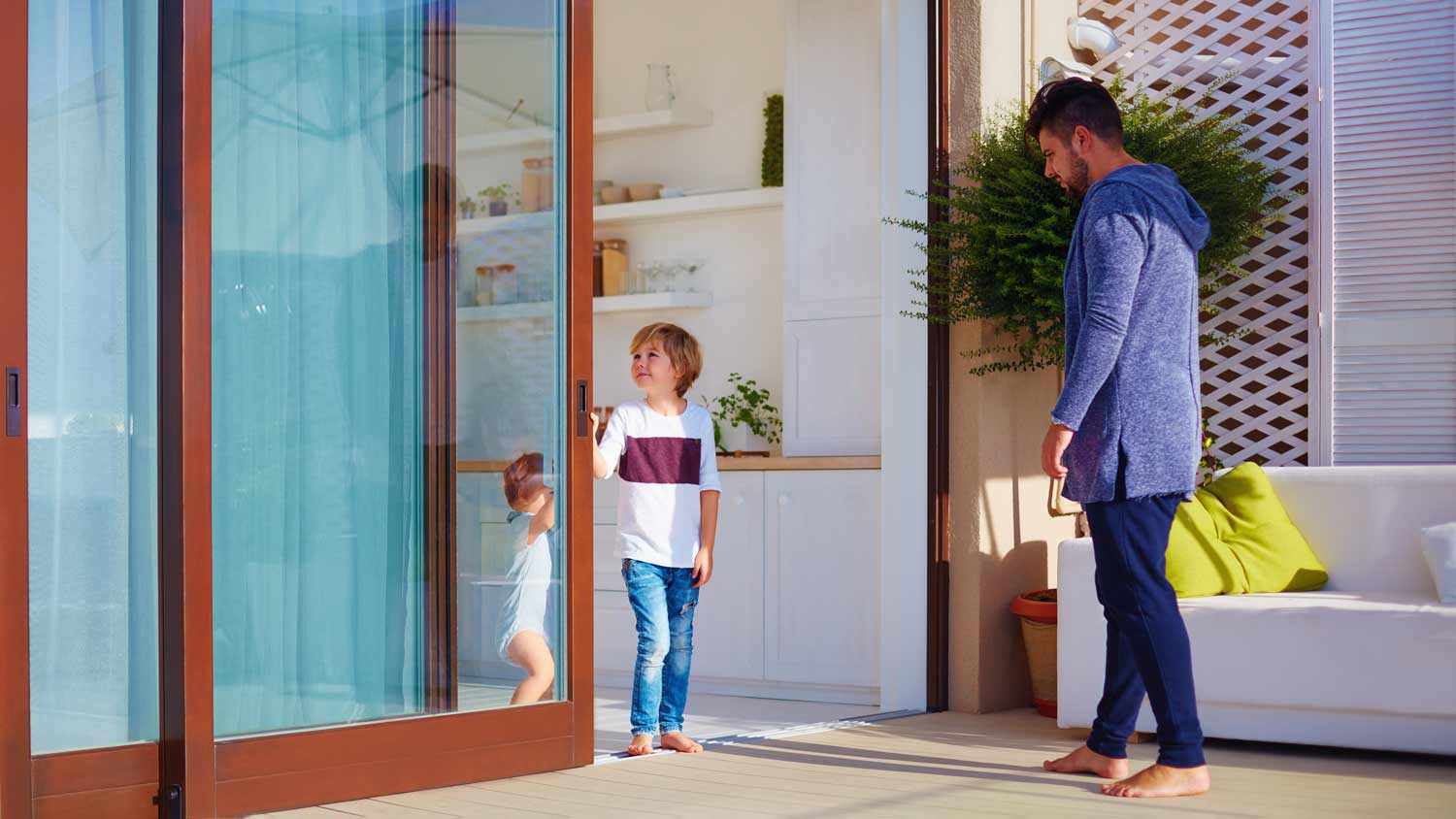
Sliding glass doors come in many glass types, sizes, and styles to give your home the perfect custom look. They work well as sliding patio doors or doors for en-suite bathrooms.
One variation on standard sliding doors is French doors. These doors operate just like standard sliding glass door parts, only they have multiple glass panels that add details to your home. The doors can mimic the appearance of French doors, but unlike French doors, which operate using a hinge, sliding glass doors slide open and closed.
| Pros | Cons |
|---|---|
| Elegant addition to homes | Higher cost |
| Adds natural light | More cleaning maintenance |
| Can make rooms appear larger | Heavier and harder to install |
Best for: Patios overlooking a scenic view
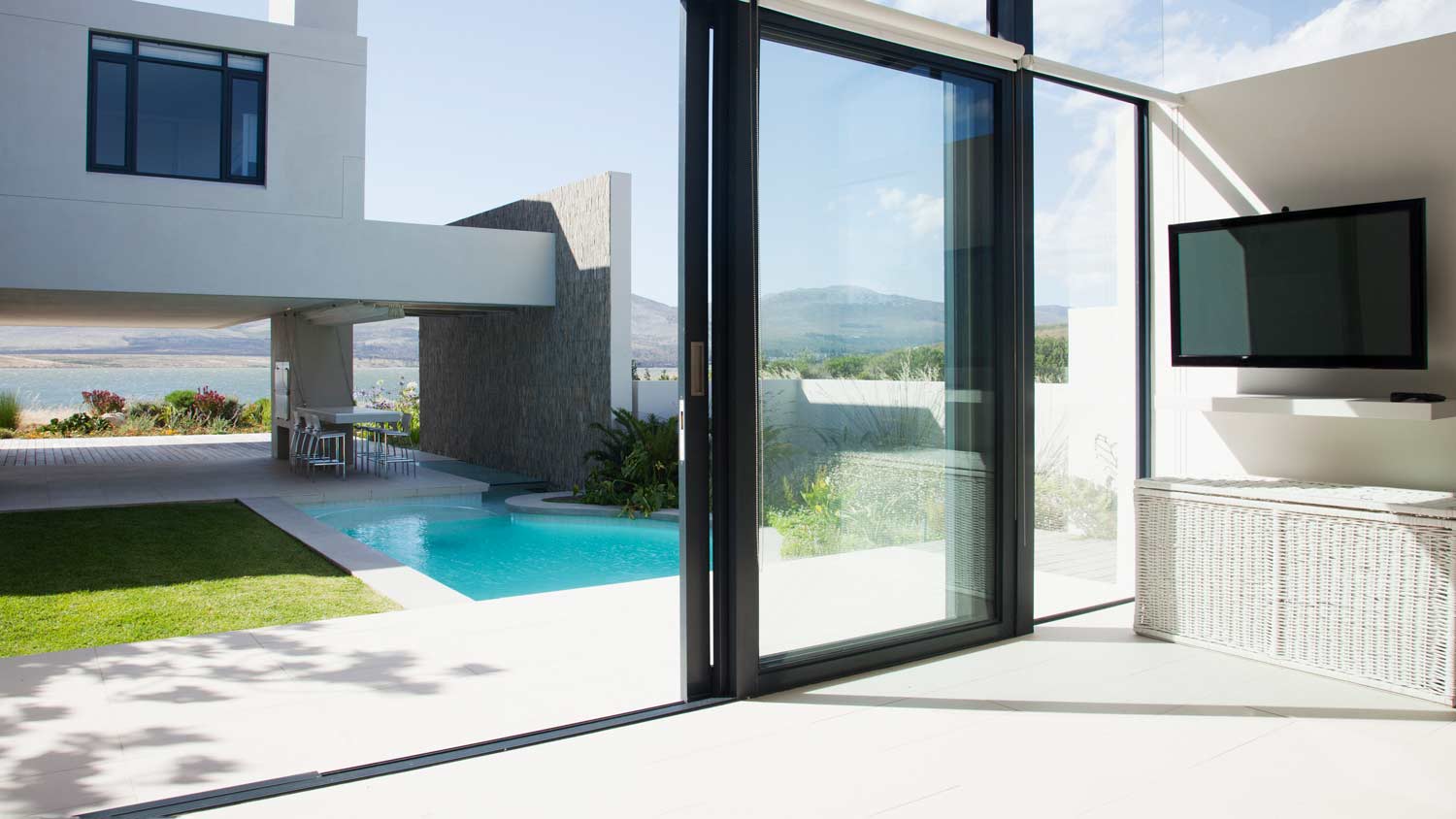
As the name suggests, telescopic sliding doors give the ultimate panoramic views for large spaces. This premium type of sliding door contains a series of panels that slide and stack to save on room without sacrificing much space.
| Pros | Cons |
|---|---|
| Greatly increases natural light | Highest cost |
| Creates the illusion of more space | Best left to the pros |
| Takes up minimal space | Noisier and harder to operate |
Best for: Large homes with expansive views
The average cost to install an exterior door ranges from $550 to $2,400, but sliding glass doors cost between $1,200 and $4,300 on average, while multi-panel folding doors can cost upwards of $13,800. With labor from a local sliding glass door installer accounting for 30% to 35% of that total, it makes sense that you’d want to find ways to save on the installation. But whether or not you can install a sliding door DIY-style depends on several factors, including:
The materials: Heavy door materials like glass and wood can be more complex and dangerous to install, whereas lightweight materials like vinyl or PVC may be easier to install. If you damage the door during the installation, then you’ll have to factor in the cost to repair the sliding door.
The type of sliding door: If you're installing pocket, telescopic, French, or bypass sliding doors, you may struggle more with the installation process due to the additional mechanisms or moving parts. Some types of sliding door tracks are easier to install than others. On the contrary, Shoji and accordion sliding doors may not require the help of a pro.
Whether you’re replacing an existing sliding door: If you’re installing a new one in place of an existing one, it may be easier to retrofit the door and install it yourself than if you’re installing a door for the first time. However, if you’re replacing glass in a sliding door, leave it to the pros to handle.
Your skill level: Some DIYers have more experience installing doors than others, so consider your skills before tackling this project.
From average costs to expert advice, get all the answers you need to get your job done.

A storm door can protect your front door and let in more fresh air. Find out how much storm door installation costs for materials, labor, and more.

When adding a fresh new entryway to your home, you may be curious about the cost of sliding glass doors. Let's break it down by size, style, and design.

The cost to install a pocket door includes a few more line items than other designs. Here's what to expect from pocket door costs at each stage in the process.

Patio doors come in a variety of materials and styles. Learn how to choose the best material for your patio doors.

Trying to decide between fiberglass and steel doors? Explore the differences before choosing the best one for your home.

What is a strike plate in a door? It's one of many door parts, but this small piece is vital to a door's functionality and security.